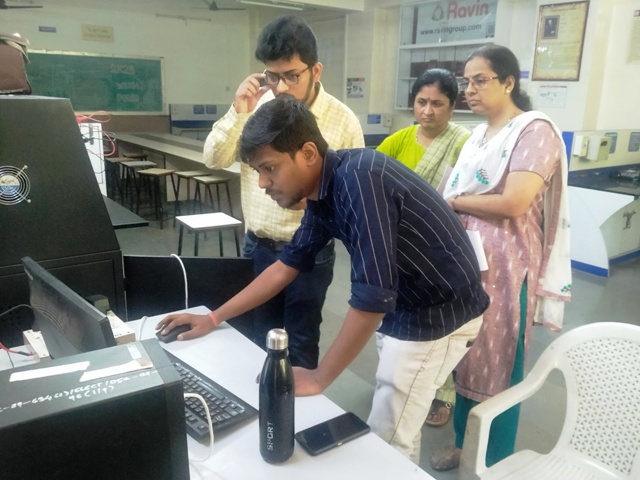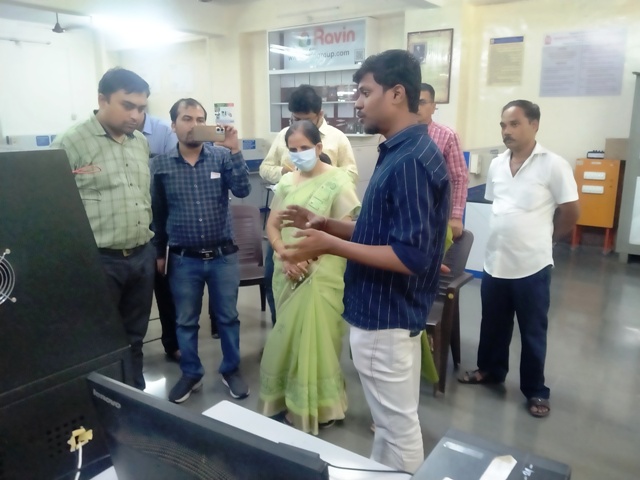Ecosense installed standalone Microgrid Lab at Modern College of Engineering, Pune
Department of Electrical Engineering, Modern College of Engineering, Pune welcomed standalone Microgrid Lab supplied and commissioned by Ecosense.

Department of Electrical Engineering, Modern College of Engineering, Pune welcomed standalone Microgrid Lab supplied and commissioned by Ecosense.
A Microgrid is a localized group of electricity sources and sinks
(loads) that typically operates connected to and synchronous with the
traditional centralized grid (macro-grid), but can also disconnect and maintain
operation autonomously or go completely off-grid as per the requirement.
To understand how a Microgrid works, you first must understand how the
grid works.
The grid connects homes, businesses, and other buildings to central
power sources, which allow us to use appliances, heating/cooling systems and
electronics. But this interconnectedness means that when part of the grid needs
to be repaired, everyone is affected. This is where a Microgrid can help. A
Microgrid generally operates while connected to the grid, but importantly, it
can break off and operate on its own using local energy generation in times of
crisis like storms or power outages, or for other reasons.
A Microgrid can be powered by distributed generators, batteries, and/or
renewable resources like solar panels. Depending on how it is fueled and how
its requirements are managed, a Microgrid might run indefinitely.
Ecosense’s Microgrid system is an experimental and research system. It
relies on three of the popular Renewable Energy sources i.e.; Solar PV, Wind
and Fuel Cell.
Instead of Actual wind turbine we are using Wind Turbine Emulator. Wind
turbine emulator mimics the behaviour of wind turbine for hardware level
simulations. This system has a DC motor coupled with the Permanent Magnet
Synchronous Generator, speed of which is controlled as per the speed reference
calculated by solving the mathematical model of wind turbine. Researcher can
execute the mathematical models of their newly developed or modified wind
turbine and can simulate the speed/power of profile of turbine on hardware
environment directly for different wind speeds & pitch angle.
Similarly, instead of using Solar Panels we used Solar PV Emulator.
Solar PV Emulator mimics the behaviour of Solar PV Panels for hardware level
simulations. This system comprises of two DC Switch Mode Power supplies which
can be programmed by user to either behave like a solar panel or a DC Power
supply. User can select and program solar panels in the range of 10 Wp - 1000
Wp per channel and configure them to work in Independent or Parallel
configurations to actualize a Solar PV Array. By virtue of its features, it can
be easily considered as a versatile Solar PV Array.
A 500 W dry hydrogen-based fuel cell is also used as one of the sources
in the hybrid system.
WTE-PVE- Fuel Cell Hybrid with DC Microgrid system combines the outputs
of Wind Turbine emulator, PV Emulator and Fuel Cell at a common DC link which
is further connected to a three-legged programmable inverter. At the output of
inverter, a three phase AC Load can be connected to study the behavior of
microgrid during loading.
The system uses an application software to perform its operations which
is open source and can be modified by students if required to perform their
research.

After installation a 2- day master’s training is conducted. This Masters
training program was focused on educating and training the professors and
scholars and technicians in Microgrid Technology who will further train
thousands of students and professionals to start their career or business in
this very field.